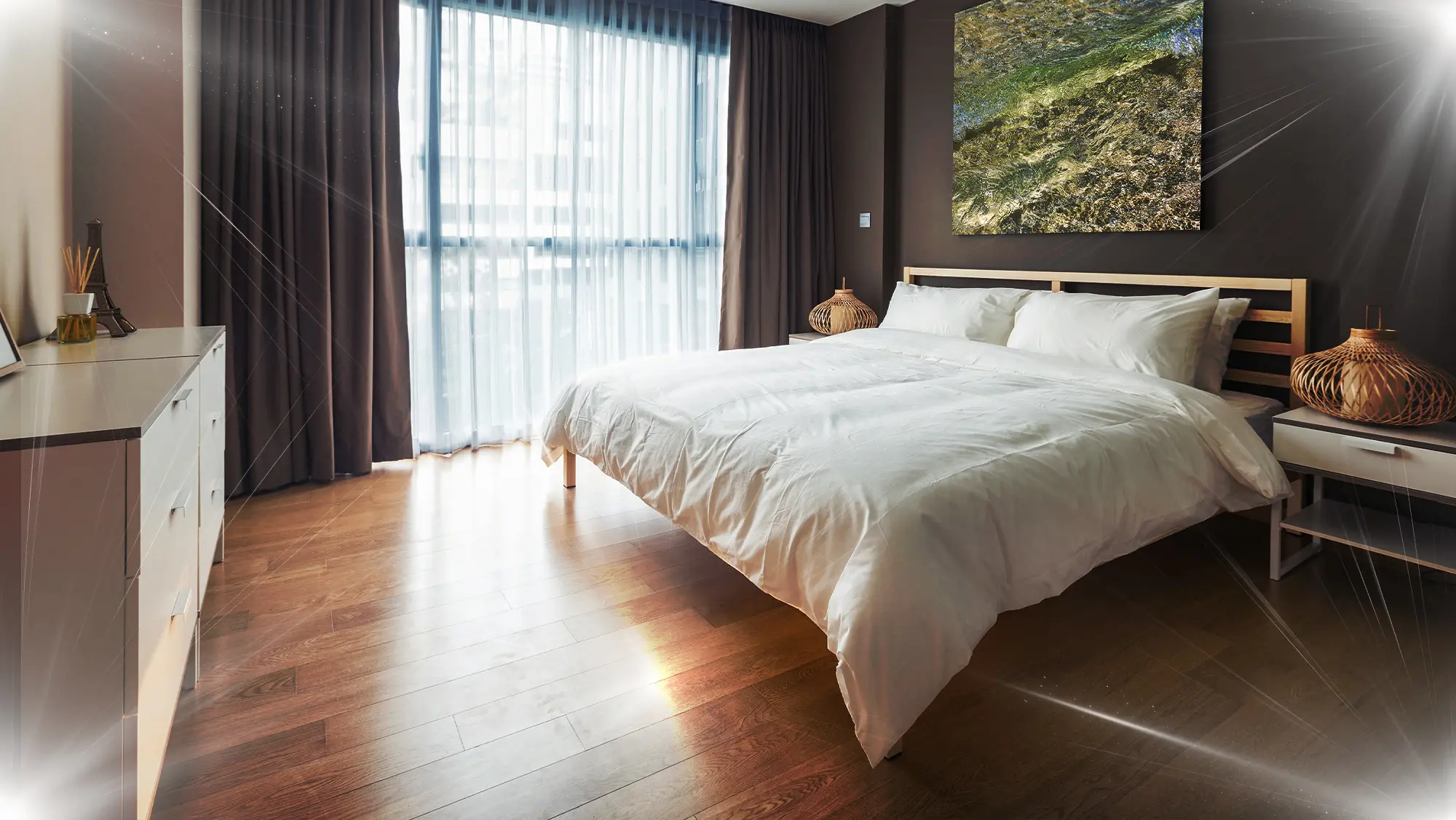Parquet flooring offers a blend of elegance and durability, making it a popular choice for homeowners. With various types available, it’s essential to understand the differences to choose the best option for your home. Here’s a detailed comparison of the main types of parquet flooring.
- Solid Hardwood Parquet
Description: Made from a single piece of hardwood, solid parquet is renowned for its natural beauty and durability.
Advantages:
Longevity: Can last for decades with proper care.
Refinishing: Can be sanded and refinished multiple times, allowing you to restore its appearance.
Aesthetic Appeal: Offers a classic and timeless look.
Disadvantages:
Cost: Generally more expensive than other options.
Sensitivity to Environment: Can warp or crack in high humidity or extreme dryness.
Best For: Living rooms, dining areas, and other low-moisture environments.
- Engineered Wood Parquet
Description: Composed of multiple layers, with a top layer of real hardwood, engineered wood provides more stability than solid hardwood.
Advantages:
Stability: Less prone to warping due to changes in humidity.
Versatility: Can be used in a variety of settings, including basements.
Cost-Effective: Typically less expensive than solid hardwood while maintaining a similar appearance.
Disadvantages:
Limited Refinishing: Can only be sanded and refinished a few times, depending on the thickness of the top layer.
Quality Variance: The quality can vary significantly between brands.
Best For: Kitchens, bathrooms, and areas with fluctuating humidity levels.
- Laminate Parquet
Description: Made from high-density fiberboard with a printed wood design on top, laminate parquet is designed to mimic the look of real wood.
Advantages:
Affordability: Generally the most budget-friendly option.
Durability: Resistant to scratches and dents, making it ideal for high-traffic areas.
Easy Maintenance: Simple to clean and does not require refinishing.
Disadvantages:
Lack of Authenticity: Lacks the warmth and depth of real wood.
Non-refinishable: Once damaged, laminate cannot be refinished.
Best For: Family rooms, playrooms, and other high-traffic areas.
- Reclaimed Wood Parquet
Description: Made from recycled wood, reclaimed parquet offers a unique look with a sense of history.
Advantages:
Eco-Friendly: Sustainable choice that reduces waste.
Unique Character: Each piece has its own history, providing a distinctive appearance.
Durability: Often made from older, denser wood, it can be very durable.
Disadvantages:
Cost: Can be more expensive due to sourcing and processing.
Availability: May be harder to find, depending on the source.
Best For: Living spaces seeking a rustic or vintage feel.
Finally
When choosing the best parquet flooring for your home, consider factors like your budget, the specific room conditions, and your aesthetic preferences. Solid hardwood is ideal for elegance and longevity, while engineered wood offers versatility and stability. Laminate is perfect for affordability and easy maintenance, and reclaimed wood adds unique character to your space. Take your time to weigh these options and select the flooring that best suits your lifestyle and design vision.



